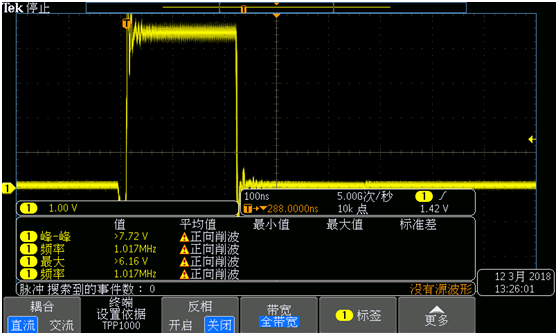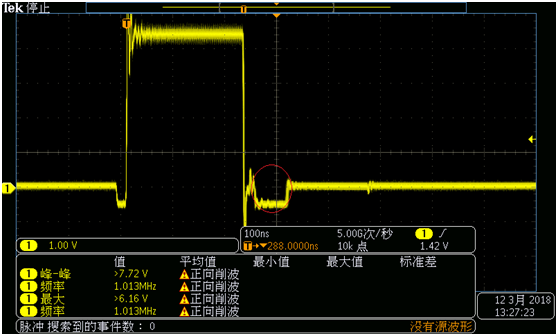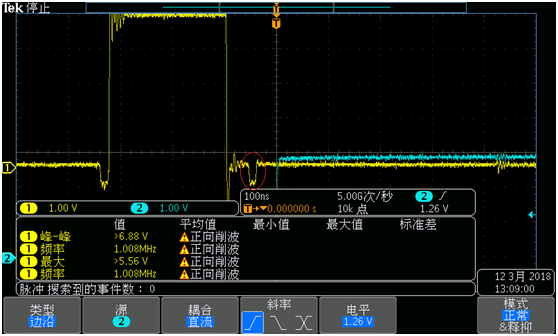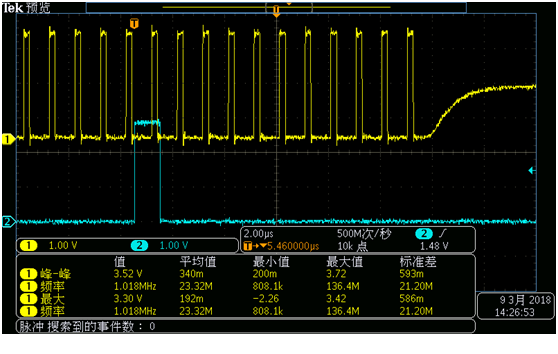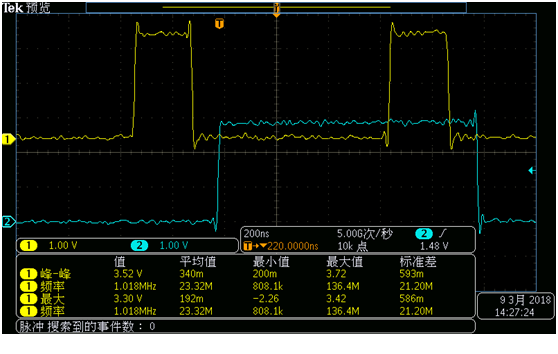Other Parts Discussed in Thread: TMS320C6678, , UCD9244
I use UCD9244 + UCD7242 to power TMS320C6678 CVDD.
There are two board, one is work fine.
Another one will encounter FLT condition when the current increase to about 4A.
The GUI only report FLT condition, no other error occurs.
When I probe the SW signal, I find that the SW signal of the one board is always like this.
When the current is increasing, the SW signal of the another board become like this.
I point out the unusual waveform with red cycle.
When the width of the unusual waveform increase, the FLT condition occurs.
channel 1 is SW and channel 2 is FLT.
Why?
Thanks


